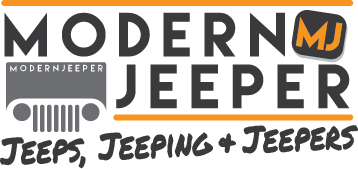![[pics] Who Invented the Ecosystem and Why Care? (Part 1)](https://i0.wp.com/modernjeeper.com/wp-content/uploads/2019/11/science-river-moke-jeep-scaled.jpg?resize=640%2C300&ssl=1)
![[pics] Who Invented the Ecosystem and Why Care? (Part 1)](https://i0.wp.com/modernjeeper.com/wp-content/uploads/2019/11/science-river-moke-jeep-scaled.jpg?resize=750%2C350&ssl=1)
[pics] Who Invented the Ecosystem and Why Care? (Part 1)
Land Use Updates December 24, 2019 Del Albright
![[pics] Who Invented the Ecosystem and Why Care? (Part 1)](https://i0.wp.com/modernjeeper.com/wp-content/uploads/2019/11/science-river-moke-jeep-scaled.jpg?resize=640%2C300&ssl=1)
Part 1 of a special 3-part series in landuse and environmental science providing a greater understanding of how these cannot be separated if we want to save trails and keep our motorized recreation sports alive and well.
The Editors
Environmental Science, Part 1; Ecosystem Management
To be an effective recreational trail leader, landuse advocate or club delegate who promotes land stewardship, you must understand the “big picture.” You must be able to help other volunteers understand how one project fits with others into the big picture. It is for sure and for certain that those who don’t like our choice of recreation know about this concept.
When everyone sees how all the pieces fit together, it is much easier to stay motivated in an isolated project. It is also much easier to stay focused on a strategic purpose when you know the big picture.
No. There is no one who “invented” the ecosystem. It is a scientific term — a real word. “Invented” terms might conjure up words like “global warming” or “soundscape” or “buffer” and on and on. But let’s talk about science here.

Managing the Ecosystem…
“Ecosystem Management” is a term that describes the big picture. Webster defines an ecosystem as a system made up of a community of animals, plants, and bacteria interrelated together with its physical and chemical environment.
One definition of management is the act, art, or manner of managing, or handling, controlling or directing.
So, ecosystem management is the art, act (add science) of handling or controlling our interrelated communities of man and nature. In simplest terms, it means managing the big picture with all the pieces taken into account.
Let’s look at some examples.
Logging: When a tree is harvested in the forest, several things change: Shade levels on the forest floor decrease; openings increase; habitat for tree-dwelling birds diminishes; forest duff and litter may increase; fire hazard could be increased or reduced; oxygen levels may decrease; wood supply increases; more homes can be built and people have jobs.
Snags, such as the one in this photo, can be left behind to become wildlife (bird) habitat. Or they can be felled to eliminate a future fire hazard.

Road Building: When new roads are built, several things can change. Access is improved. Fire suppression capabilities are increased. Fire hazard is reduced. Hunting opportunities may be enhanced or diminished. Land acreage for wildlife habitat is diminished. Erosion and riparian sedimentation may increase or decrease. People have jobs. Lands can be better managed with improved roaded access. “Wilderness” values are diminished.

Trail Projects: When you do something to your trail, other things are impacted. Newly constructed water bars disperse water onto areas it has not been before. Ditching alongside a trail carries water in a larger volume to new areas. Forest duff layers change. Wildlife habitat could be modified. Sound levels may increase. Riparian disturbance could be increased or decreased depending on trail design. Depending on use levels, wildlife may be displaced. User access is improved. Agency relationships are enhanced. Volunteers who work on their trail have increased chances for grant dollars.

Grazing: Livestock grazing changes the landscape in some cases. Fire hazards can be reduced. Grass stubble length can be managed. Riparian habitat can be damaged. Stream banks can be modified over time. Forest health overall can be improved with the reduction of brush and unwanted plant species. People have jobs and food at reasonable prices when grazing is allowed.
Some grazing allotments are perceived as misuse of public lands and cause controversy. Some lands that had grazing, then lost grazing allotments are now extreme fire hazards and unmanaged dog-hair thickets.

Summary
There are several messages in these examples.
First, the ecosystem is a big puzzle, and every piece fits together to make a complete picture.
Second, everything in nature has a niche – their place in the world.
Third, like dominoes standing in a row, if you knock one over, you might cause the whole row to tumble. The ecosystem needs to be managed in individual components, while still considering the whole big picture.
Fourth, ecosystem changes can be mitigated to give us tradeoffs when making changes to one piece of the puzzle.
The big picture is a beautiful one when it all comes together.
Note: “Mitigation” is a commonly used term these days for property developers all over the country. When they build a subdivision in an area containing certain species or habitat concerns, the developer quite often must buy other properties and set them aside as mitigation for the project. Greenbelts are a form of mitigation for the loss of wildlife habitat.
Everything affects everything else in some way. If we want to keep our Jeeping lifestyle alive, we must understand how we fit into the scheme of things. It’s all about the big picture of nature and humans. Sometimes we need to consider the effect of all these things coming together on one project. We call this the cumulative effect or impact.

##
Stay tuned for Part 2, Environmental Science and Cumulative Impacts





![MJ Destinations: 3 Days in The Mojave National Preserve – Day Three [BONUS MAPS]](https://i0.wp.com/modernjeeper.com/wp-content/uploads/2024/02/Mojave-Day3-48-scaled.jpg?resize=70%2C70&ssl=1)






